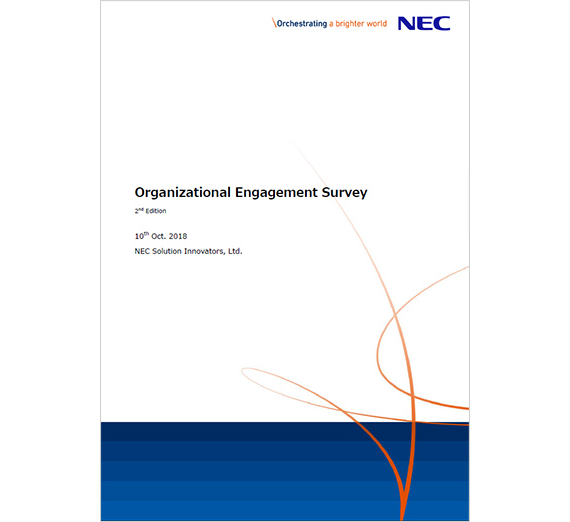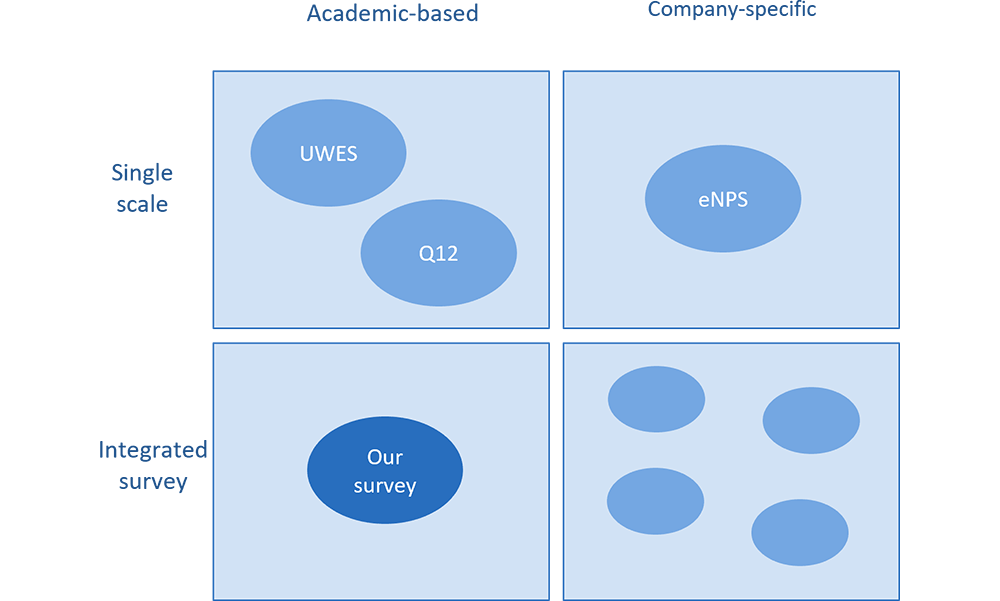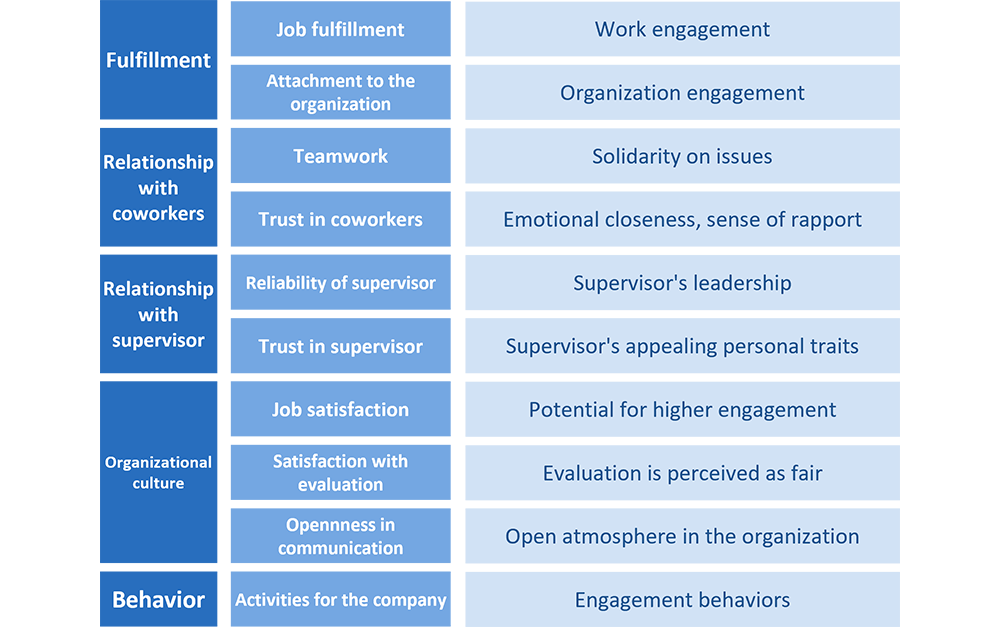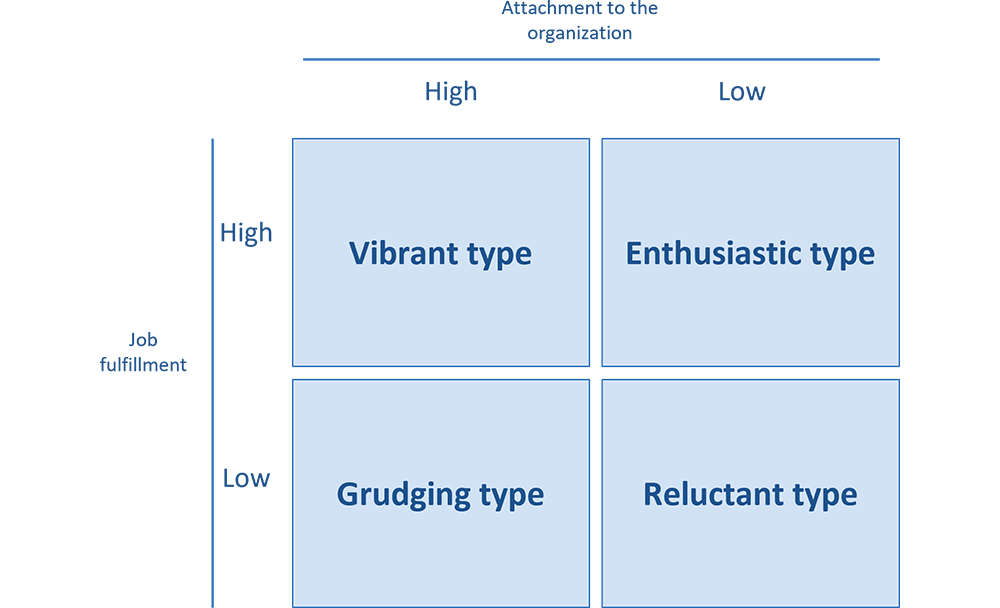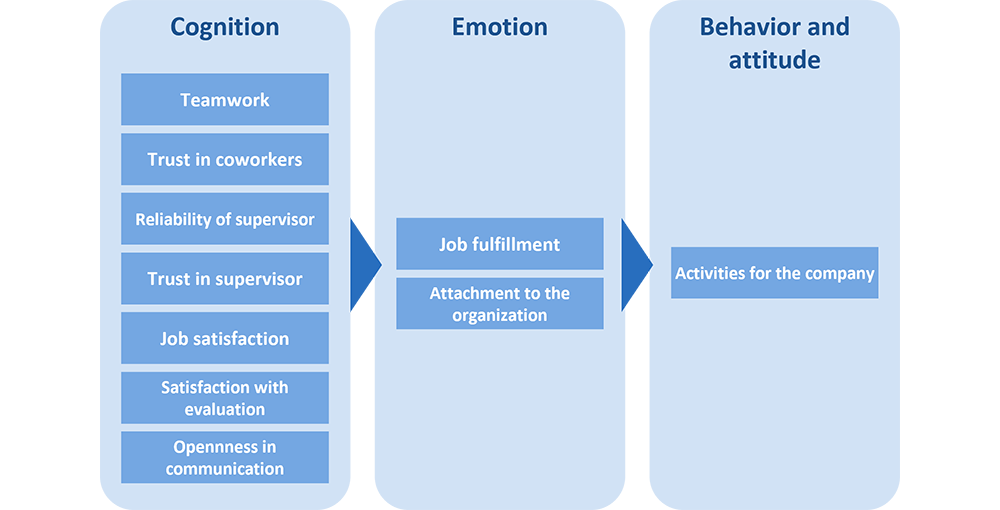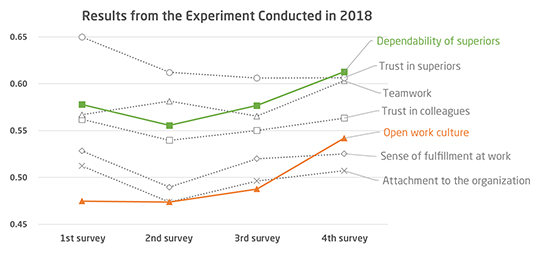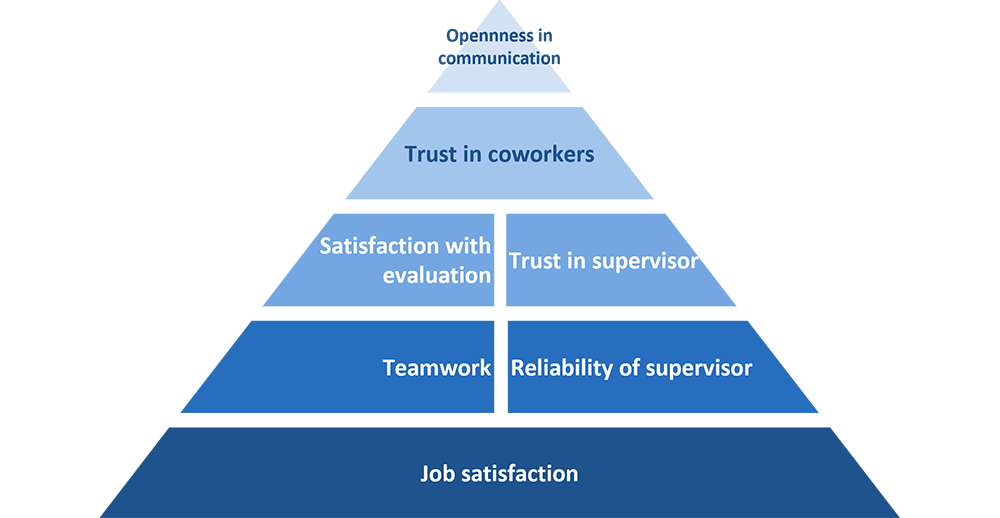The Organizational Engagement Survey, our original questionnaire, is developed based on previous work engagement research. The question items are related to work engagement, which we carefully selected by extracting through actual data acquisition and analysis.
Key Features- Capable of measuring factors equivalent to work engagement.
- Created not based on experience or intuition, so it is not dependent on the subjectivity of the creator.
- Measures both work and organization engagement simultaneously.
- Includes factors related to engagement, facilitating the consideration of solutions.
- Intended for investigating causes and solutions in the workplace, not as a comprehensive organizational survey.
Response method: 7-point Likert scale
